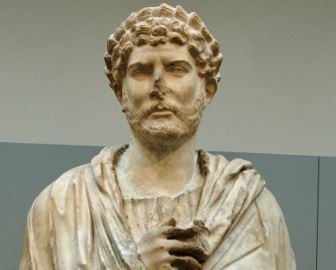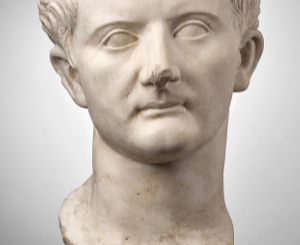Emperor Hadrian: Life Story & Great Achievements

Emperor Hadrian: Life Story & Great Achievements
Hadrian was one of ancient Rome’s most adored and virtuous emperors. Also known by his full name Publius Aelius Hadrianus Augustus, his reign lasted 117-138 CE. Unlike other unjust emperors, Hadrian’s name secured the 3rd position on rankings of the Roman Kingdom’s good emperors (the Five Good Emperors – Nerva, Trajan, Hadrian, Antoninus Pius, and Marcus Aurelius). His achievements can never be erased by history.
Birth and Family Relations
On 24th January 76 CE, the emperor was born to Publius Aelius Hadrianus Afer and Domitia Paulina. There is some amount of uncertainty surrounding Hadrian’s place of birth. But generally, it’s thought that his birth likely took place in Italica, located in the Seville Province of Spain.
Hadrian’s parents both came from strong political backgrounds- his father was a senator, and his mother was a famous politician’s daughter.
Hadrian’s one and only sibling was a sister by name Aelia Domitia Paulina. His most influential family relation that eventually paved the way for his rise to power was Trajan, an Italica-born and bred cousin of his father.
Early Life
At the age of 10, young Hadrian was caught in grief when his parents passed away in 86 CE. It was evident that Hadrian was a man of action; he loved to hunt. When he reached 14-years-old, Trajan arranged for him to further his education in Rome. There, he developed a strong interest in Greek literature. Consequently, he was nicknamed “Greekling” (Graeculus).
His first public service obligation was serving in the military. He was made a Tribune to work for Emperor Nerva who ruled from 96 to 98 CE. After Nerva’s death, Trajan took over the mantle of Roman leadership. He reigned from 98 to 117 CE.
Accession to the Throne

Statue of Emperor Hadrian | image
Hadrian’s way to the throne had a series of stumbling blocks, but luck interspersed with hard work made his accession a dream come true. This was a man who worked in different offices of the military and gained a lot of kingship experience. He occupied key military offices of the Roman provinces of that time – after working in Upper Moesia, he was later transferred to Lower Moesia.
Towards the end of 97 CE, Hadrian was tasked to travel to Gaul, in the west, to congratulate Trajan when the ailing Emperor Nerva happened to pick Trajan as his successor. At that juncture, Hadrian was closer to rising to the throne than any other person. His increased chance of kingship put Hadrian at a dangerous zone of unfriendly relationship with Servanius, his brother-in-law. The bad blood developed out of their eyes on the throne.
As years passed by, Hadrian’s influence in major Roman affairs increased. He was made a consulate in 107 CE, serving his people with love and devotion.
During the bloody days of the Parthian War, Hadrian worked as an officer under the reigning emperor Trajan. In 117 CE, Emperor Trajan set off westward, while Hadrian took charge of the army in Syria. On 9th August that year, Hadrian received exciting news that Emperor Trajan had endorsed him as his successor.
Unknown to Hadrian, he was just a few days away from rising to power. On 11th August, the news broke out about Emperor Trajan’s tragic death. The emperor was on his way to Rome when luck eluded him and he met his death. There were suspicions of murder.
Following Trajan’s death, the army announced Hadrian as the new emperor of Rome.
According to ancient.eu, Trajan did not officially name Hadrian as his successor. Due to Trajan’s untimely death, that honor of naming a successor fell to Trajan’s wife, Plotina. Regardless of this, several historians reason that Trajan rated Hadrian very highly. Therefore, it is likely that had Trajan had the chance to name his successor before his death, his most obvious candidate would have been Hadrian.
Achievements of Emperor Hadrian
When royal power and duties were vested in him, Hadrian lived up to the expectations. No one was better at initiating development projects than Hadrian. He gave a complete facelift to the empire during his tenure on the throne. All of his numerous infrastructural projects were fueled by his extreme fascination with architecture.
Here are some examples of Emperor Hadrian’s major achievements:
Massive Revival of Cities

What is left of the Arch of Hadrian, Athens, Greece – a monument built partly in honor of Emperor Hadrian’s accomplishments in Athens
Hadrian was a very wise and down-to-earth Roman emperor. His reign was one of the most peaceful of times in ancient Rome. And because of his ability to relate with the ordinary man and soldier, Hadrian was beloved across the length and breadth of the empire. He worked tirelessly to improve the living standards of cities across his empire. He was also responsible for building the Antinopolis in Egypt. He built the city in honor of his dearly beloved friend (lover perhaps), Antinous.
In Athens, Greece, for example, Hadrian was close to being venerated in an equal capacity as the city’s first founder, Theseus. Such was his appeal that the city of Athens, in c. 132 CE, honored him with an arch – the Arch of Hadrian.
He Brought Peace
His rise to power coincided with the peak growth of the empire, caused by the expansionist endeavors of its leaders. Upon coming into power, he inherited a conflict-locked empire. But he quickly took steps to make peace prevail through strength.
Immediately after his coronation, he tried to stabilize the empire by withdrawing Roman troops stationed in ancient Mesopotamia (present-day Iraq).
Ironically, the emperor believed in “peace through strength”. So he didn’t go to sleep after withdrawing his troops from war grounds. Hadrian ensured that his enemies and would-be attackers of Rome knew how strong and mighty Rome is.
Built a Fortified Wall – the Hadrian Wall

Designated a UNESCO World Heritage Site in 1987, Hadrian’s Wall (located in present-day Northern England) was built by Roman Emperor Hadrian. Construction is said to have begun around 122 AD. The 73-mile (117 km) wall runs from the River Tyne in the east to the village of Bowness-on-Solway in northern England. The coast-to-coast wall was built to prevent rebellious incursions from northern Britain.
To strengthen the boundaries of the empire, Hadrian famously built an iconic wall, now known as Hadrian’s Wall. The popular defensive fortification was built across the width of Northern England. Stone and timber were used to construct the historic wall. Stretching about 73 miles, Hadrian’s Wall is listed as a World Heritage Site. This posthumous honor was given in 1987.
Construction work on the wall lasted for about 6 years. The emperor’s motivation to build the wall stemmed from security concerns- he wanted to create a barrier between the Barbarians and Romans.
Around the wall’s forts emerged a community of soldiers, their families, and traders and other craftsmen.
Aside from the popular wall, the emperor also built some walls around the Danube & Rhine.
He Constructed Hadrian’s Villa
Building monuments was Hadrian’s top priority. He was really famous for putting up iconic structures across the empire. One magnificent building erected by Hadrian is his villa. Located at Tivoli, close to Rome, the villa’s great size and magnificence depict the richness of his imperial reign.
To Hadrian, the Villa was more than a vacation resort. He thought of it as a business center incorporated with luxury. Being a fan of explorations, the bearded emperor wanted to leave memorable artifacts of his reigning days. The villa didn’t lack any awesome features: talk about a swimming pool or gym area and you will find everything. The emperor also used his residence to host visitors, soldiers, and court members and servants.
Religious Buildings (the Pantheon)
Hadrian’s impact on the construction of religious is arguably the greatest achievement of Hadrian. For example, he was the brain behind the reconstruction of the famous temple known as the Pantheon. Initially built for the gods, the Pantheon in Rome is a domed temple that has come to represent the pinnacle of Catholic churches. It still stands strong today.
Hadrian and Antinous

Antinous, the young male lover of Emperor Hadrian, is depicted as the Greek god Dionysus, the deity of fertility and wine.
Even though the emperor tied the knot with Sabina Augusta, the great-niece of Trajan, he had a number of male partners, most famous among them Antinous, a young man of around 20 years old.
It is said that Antinous tragically died (most likely drowned in the Nile) while on a trip with Hadrian in Egypt. The young Bithynian’s death was heavily mourned by Hadrian, who established a new city (Antinopolis) around the spot where Antinous passed away.
In addition to building statues in honor of Antinous, Hadrian proceeded to deify his younger male lover. Such an honor was mainly reserved for members of the imperial family. The cult of Antinous went on to be very popular, especially in Rome’s eastern provinces. This explains why there are many surviving images of Antinous.
It’s often said that Antinous comes in third in terms of the number of surviving images from the Roman world. The first two are Augustus and Hadrian.
Emperor Hadrian’s Death
After making huge impact and leaving lasting impressions on the Roman Empire, Hadrian gave up the ghost on 10th July 138 CE. He was about 62-years-old. The cause of death was a heart disease.
Despite the allegations of homosexuality tied to his name, Hadrian had a wife named Sabina. They had no children.
Hadrian’s pick as successor, Emperor Antoninus Pius, continued in a similar fashion as Hadrian.
Read more:



























